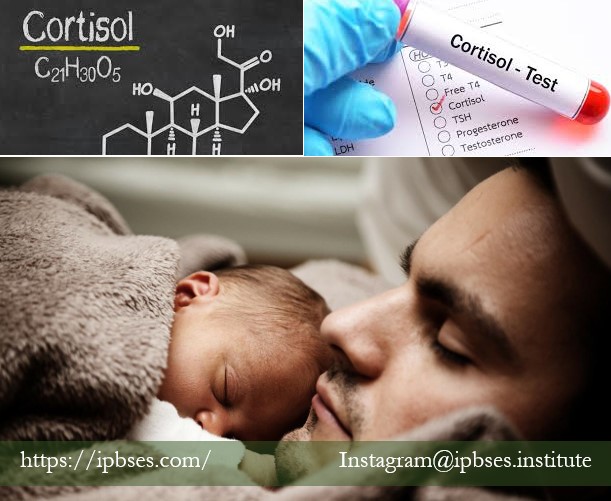پژوهشگران دانشگاه واترلو و مکمستر کانادا در پژوهشی بدیع به بررسی رابطه بین کورتیزول موی کودکان و میزان تنش آسیبشناختی در روابط والد-فرزند پرداختند.
روش:
در این پژوهش شبهآزمایشی، ۱۰۰ کودک در سنین ۸ تا ۱۷ سال که برای انواع درمانهای روانشناختی/روانپزشکی (بستری/سرپایی) به بیمارستان مراجعه کرده بودند به همراه والدینشان شرکت نمودند. نتایج حاصل از مصاحبه مختصر عصبروانشناختی کودکان و نوجوانان (MINI-KID)، مقیاس افسردگی مرکز مطالعات همهگیری شناختی (CES-D)، پرسشنامه استرس وضعیت- صفت (STAI)، و نمونه موی پسسری کودکان مورد تحلیل قرار گرفتند.
نتایج این پژوهش نشان دادند:
- مشکلات و اختلالات روانی اضطرابی و افسردگی والدین رابطه مستقیم و مثبتی با سطح کورتیزول موی کودک دارند.
- سطح کورتیزول موی کودک با دورههای افسردگی و اختلال بیشفعالی/نقصتوجه (ADHD) کودکان و نوجوانان رابطه مثبت دارد.
- در پسران، اضطراب تعمیمیافته و رفتارهای نافرمانی مقابلهجویانه با سطح موی کورتیزول کودک رابطه مثبت دارند.
راهبردهای کاردبردی:
- با توجه به اینکه سطح تنشهای روانشناختی والدین رابطه مستقیمی با سطح استرس فرزندانشان دارد، مداخلات خانوادهدرمانی متمرکز بر مدیریت استرس کمک شایانی به کاهش استرس والدین و در نتیجه کاهش اختلالات روانی فرزندان خواهد داشت.
- مهارتهای همسرداری و فرزندپروری، با توجه به افزایش سطح مهارتهای والدین در زندگی مشترک خانوادگی و بالا بردن خودکارآمدی، به کاهش استرس والدین منتهی خواهد شد.
- از دیدگاه سیاستگذاری اجتماعی، برای کاهش اختلالات روانی کودکان و نوجوانان که نسل آینده جامعه هستند، لازم است مهارتهای دهگانه زندگی بصورت اجباری و فراگیر در سطوح و لایههای مختلف سنی و جنسیتی جامعه بصورت عملی آموزش داده شوند.
Hair cortisol concentration mediates the association between parent and child psychopathology
Abstract
Parent and child mental health are strongly associated and this association may be transmitted via disruption to the hypothalamic-pituitary-adrenal axis in children. This study examined the potential mediating role of hair cortisol concentration (HCC) in the association between parent psychopathology and child mental disorder.
Method
Data come from 100 children diagnosed with a mental disorder [major depression (66 %), generalized anxiety (58 %), attention-deficit hyperactivity (33 %), oppositional defiant (35 %)] and their parents.
Parent psychopathology was measured using the Center for Epidemiological Studies Depression Scale and State-Trait Anxiety Inventory.
Child mental disorder was measured using the Mini International Neuropsychiatric Interview and hair samples were assayed using high-sensitivity ELISA for cortisol extraction.
Results
Sex-specific path models were specified to estimate mediating effects (αβ). Children were, on average, 14.4 (SD 2.3) years of age and 70 % were girls.
Adjusting for child age, parent sex, and family income, HCC mediated the association between symptoms of parent psychopathology and major depression and attention-deficit hyperactivity in all children (αβ ranging -0.07 to 0.19; 38–۴۶ % effect mediated).
Mediating effects for generalized anxiety and opposition defiant were evident for boys only (αβ ranging -0.26 to 0.14; 31–۳۸ % effect mediated).
Conclusion
Evidence suggests HCC partially mediates the association between parent psychopathology and child mental disorder, and for generalized anxiety and oppositional defiant, this effect is specific to boys.
Family inventions to reduce child stress may be effective in buffering the consequences of parent psychopathology. Further research that considers sex effects is needed to clarify how HCC conditions risk for mental disorder in children.
Keywords
Adolescent, Mental disorder, Physiological stress, Sex-effects
لینک منبع پیشنهادی برای مطالعه بیشتر  (further reading)
(further reading)




